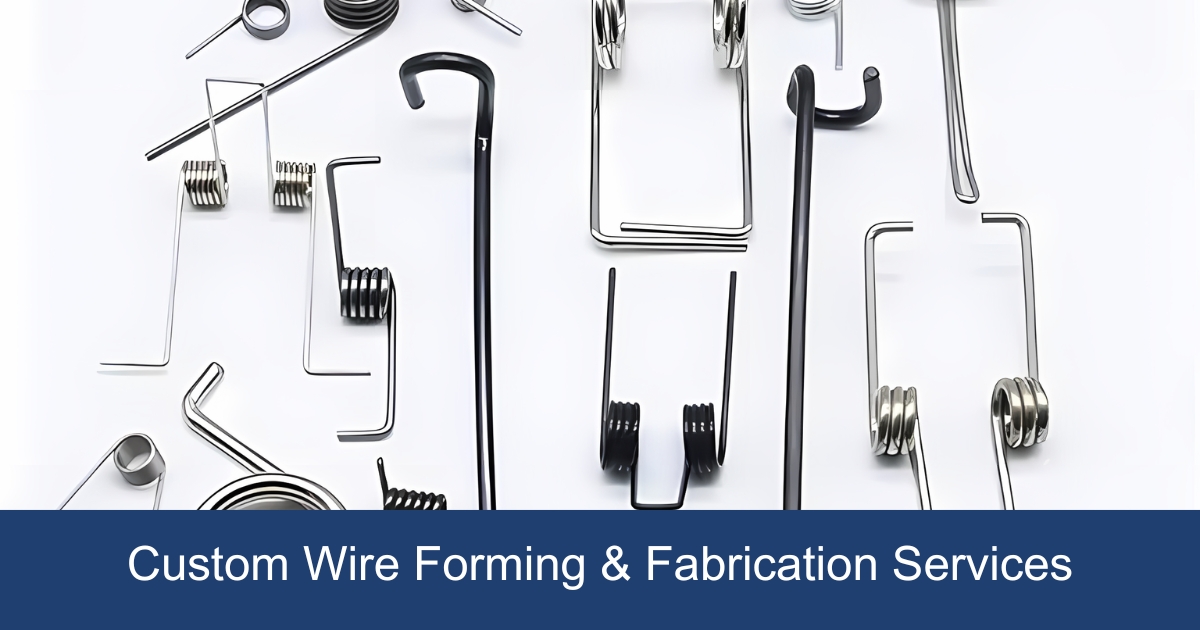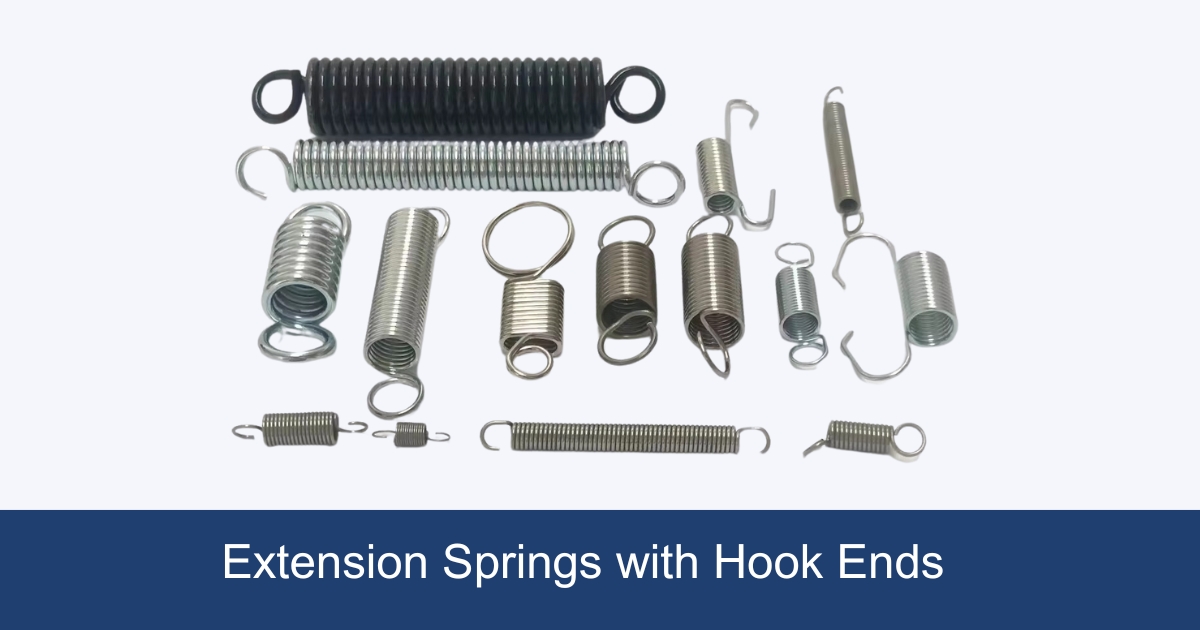As a mechanical engineer with years of experience in designing and manufacturing custom extension springs, I understand the importance of a well-crafted and reliable spring. Whether you need custom extension springs for a specific application or to replace an existing spring, this article will guide you through the process in 10 easy steps. From choosing the right material to specifying the desired quantity range, we will cover all the essential aspects of creating custom extension springs tailored to your unique requirements.

Step 1: Choose Extension Springs Material
The first step in creating custom extension springs is selecting the appropriate material. The choice of material depends on factors such as the intended application, environmental conditions, and desired properties of the spring. Some commonly used materials for custom extension springs include music wire, hard drawn MB, oil-tempered wire, stainless steel (202), phosphor bronze, and brass. If none of these materials fit your specific needs, you can specify other materials that better suit your requirements.
Step 2: Wire Diameter of Extension Springs
After selecting the material, you need to determine the wire diameter for your custom extension springs. The wire diameter plays a crucial role in determining the strength and flexibility of the spring. It is essential to strike the right balance between these two factors to ensure optimal performance. Provide the exact wire diameter you desire, and our manufacturing team will ensure precise execution.
Step 3: Diameter of Extension Springs
Next, you need to specify whether you require the inside or outside diameter of the finished spring. This dimension is crucial as it determines how the spring fits into your application. The inside diameter is measured from the innermost point of the spring, while the outside diameter is measured from the outermost point. Accurate measurement of the inside or outside diameter is essential to ensure a proper fit and functioning of the custom extension spring.
Step 4: Specify the Extension Spring Body Length or Number of Coils
In this step, you will need to provide either the spring body length or the number of coils you desire for your custom extension springs. The spring body length refers to the overall length of the spring, excluding the hooks or loops at the ends. On the other hand, specifying the number of coils allows for precise control over the extension and compression characteristics of the spring. Consider the requirements of your application and provide the necessary dimensions to achieve the desired performance.
Step 5: List the Overall Extension Spring Length
Building upon the previous step, you now need to determine the overall spring length or the length of the inside coils. The overall spring length includes the hooks or loops at the ends, while the length of the inside coils only considers the central portion of the spring. The choice between these two dimensions depends on your specific application and the available space for the spring. Providing accurate measurements will ensure that the custom extension spring fits perfectly into your system.
Step 6: Select the Extension Spring Ends
The end style of a custom extension spring refers to the shape and configuration of the hooks or loops at each end. The three common end styles are crossover, machine, and side. The crossover end style features hooks that cross over each other, providing a secure connection. The machine end style consists of hooks that face the same direction, facilitating easy attachment. The side end style features hooks positioned on the same side of the spring. Choose the end style that best suits your application and specify it accordingly.
Step 7: Choose the Extension Spring Ends
In addition to the end style, you also need to select the end type for your custom extension springs. The three primary end types are single loop (no gap), double loop (no gap), and hook (specify gap). The single loop end type features a single loop at each end with no gap between the loops. The double loop end type consists of two loops at each end without any gap. The hook end type includes hooks at each end with a specified gap between them. Consider the requirements of your application and choose the appropriate end type for your custom extension springs.
Step 8: Choose the Relationship of Ends
The relationship of ends refers to the orientation of the hooks or loops at each end of the custom extension spring. You can choose from options such as random, inline, opposite, 90 degrees, or specify other relationships. The random relationship means that the hooks or loops can face any direction. The inline relationship indicates that the hooks or loops face the same direction. The opposite relationship means that the hooks or loops face opposite directions. The 90 degrees relationship specifies that the hooks or loops are perpendicular to each other. If none of these options fit your requirements, you can indicate other relationships that better suit your needs.
Step 9: Select a Extension Spring Finishing
The spring finish refers to the surface treatment applied to the custom extension springs. It not only enhances the appearance of the springs but also provides protection against corrosion and wear. Some common spring finishes include plain, zinc plate, black oxide, shot peen, and passivate. If none of these finishes meet your specific requirements, you can indicate other finishes that better suit your needs. Choosing the right spring finish is crucial for ensuring the longevity and performance of your custom extension springs.
Step 10: Specify the Desired Quantity Range
The final step in creating custom extension springs is specifying the desired quantity range. Depending on your requirements, you may need a few prototype extension springs or a large batch for production. Providing the desired quantity range allows our manufacturing team to plan and execute the production process accordingly. Whether you need a small quantity or a large-scale production, we are equipped to meet your needs efficiently and deliver high-quality custom extension springs.
In conclusion, designing and manufacturing custom extension springs requires careful consideration of various factors. By following these 10 easy steps, you can ensure that your custom extension springs are precisely tailored to your unique requirements. From choosing the right material to specifying the desired quantity range, each step plays a crucial role in creating high-quality and reliable custom extension springs. If you are in need of custom extension springs, don’t hesitate to reach out to us and benefit from our expertise in the field.
Contact us today to discuss your custom extension spring requirements and get a quote tailored to your needs!



